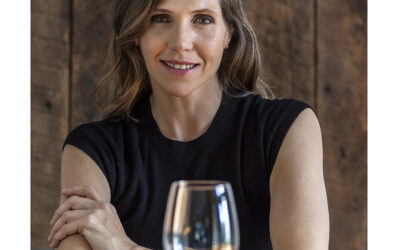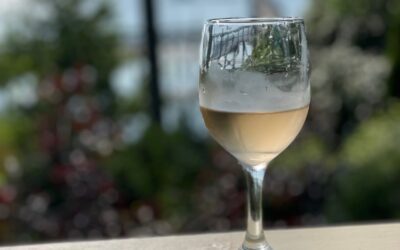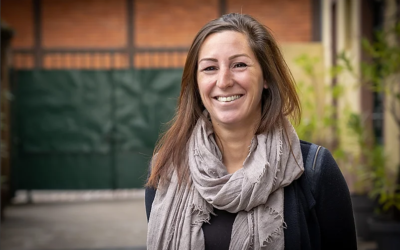FROM A COSMETICS DYNASTY TO A CHAMPAGNE LEGACY: ANNE MALASSAGNE TRANSFORMED HER FAMILY GEM INTO A TINY BUBBLE POWERHOUSE BECOMING TODAY A REFERENCE IN CHAMPAGNE.
Fourth generation at the helm of AR Lenoble, Anne Malassagne didn’t originally aspire to pursue a career in the champagne industry. She was slaying her way to success in Paris, working as a financial director at L’Oréal. But when her father fell ill and contemplated selling the family business, twenty-eight-year-old Anne didn’t hesitate to return to Champagne to save the family jewel and take over the reins of the Champagne House.
Young, inexperienced and with zero knowledge of the industry, Anne Malassagne succeeded in carving out a name for herself moving the needle with her fearless entrepreneurial spirit, tenacity, and keen business acumen in executing her vision. She singlehandedly transformed a small family house on the verge of collapse into a renown and venerated champagne brand around the world.
Small in size, but big in stature! AR Lenoble is one of the rare few remaining independent and family-owned houses in Champagne. Located in Damery in the Vallée de la Marne, the house is run by sister-brother duo (and co-owners), Anne and Antoine Malassagne, keepers of AR Lenoble’s family treasure: 18 hectares of vineyards, all certified HVE (Haute Valeur Environnementale) spread between the Grand Cru village of Chouilly in the Côte des Blancs and the Premier Cru village of Bisseuil.
My visit to AR Lenoble back in July of 2021 was one of the highlights of my one among many trips to Champagne. Anne Malassagne was unfortunately not at the estate during that time but had been gracious enough to connect me with her brother Antoine to coordinate our champagne rendezvous.
I’m beyond grateful and honored to have had the chance to catch up with her by way of this interview to talk about her incredible journey in the pétillant world of champagne, and the many strides she made to shake things up and change the” bubbly” game.
Thriving for over thirty years as a woman in a male dominated field, Anne Malassagne has unequivocally showed the world that her rightful place has always been in Champagne.
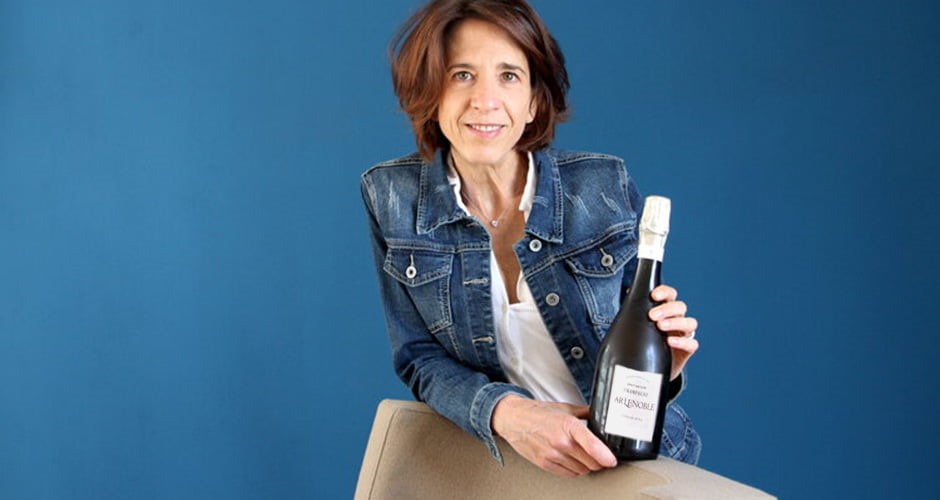
AR Lenoble Champagne was officially founded in 1920 by Armand Raphael Graser, but its story commences in 1870 during the Franco-Prussian War. Can you briefly take us through your family’s journey from Alsace to Champagne?
The story of our house starts in 1870. Amid the war, Joseph Graser, fleeing from the Germans, left Alsace, his native town, to reach on foot Epernay in Champagne where his wife Alice was from. His time in Epernay was very short as he suddenly passed away in the middle of the street at age 44.
His son, Armand Raphael, aspired to be a doctor. But having prematurely become the head of the family, he had to take charge and give up on his dream career. After a brief stint in the office of a Champagne House, he settled in Dorman in the Vallée de la Marne and developed a business as a wine broker – a profession that will allow him to brilliantly reveal his entrepreneurial flair and talent.
On August 2, 1914, at the onset of the war his life turned upside down.
Armand-Raphael was called to combat. While his face was seriously injured during the battle – father of five – he never abandoned the troops. His courage and commitment earned him years later the prestigious Legion d’Honneur.
Away from his business during the war, it was his wife Louise who courageously took over the brokerage business of her husband whilst within a hostile context.
At the beginning of 1919, the whole family thankfully reunited and moved to Damery, a village on the banks of the Marne, four kilometers away from Epernay. Armand-Raphael and his family moved into a house located in the heart of town near the school and the church. To this day it remains the headquarters of AR Lenoble Champagne. With the war over, Armand-Raphael resumed his wine broker activities. In 1920, he expanded his business by venturing into the production of his own champagne, Champagne Graser, which he will later rename “AR Lenoble.”
Where does the name AR Lenoble come from?
With the armistice approaching, Armand-Raphael thought that a name with a German consonance was not a good idea and thus created “AR Lenoble”. “AR” for his initials and “Lenoble” in homage to the nobleness of Champagne’s wines. Ahead of his time, he signed every champagne label with a slogan that sounds like a commercial “Le Noble Champagne, Champagne AR Lenoble” (the noble champagne, Champagne AR Lenoble).
The story of your family is a story of survival much like the story of Champagne. Where does this resilience come from? You, as well, had to adapt to a pandemic at a time when your Champagne House was readying to celebrate its centennial anniversary.
Champagne is situated in the most septentrional viticulture region of France.
The climate is rough, so is the agricultural and viticultural culture. For a long time, Spring frosts were devastating, destructing entire harvests. You needed a lot of courage, perseverance, and convictions to overcome these natural tragedies.
In the 1950s, while my father was about to take over his father’s land in Chouilly, two extremely cold winters annihilated entire harvests. Without grapes there is no champagne and without champagne there is no money. Discouraged, my dad then decided to become a doctor. Remaining a grower at heart, the minute he had the opportunity he took over the reins of the family house and juggled both roles (doctor and grower) for twenty years.
Beyond the rigorous weather, the geographical location of Champagne exposed the region to barbaric invasions, wars during the Middle Age, and horrors of World War One.
But from this cold and difficult land that has tremendously suffered throughout the centuries was born a magic wine symbol of dream and festivities. And it is the sheer force and determination of the women and men of Champagne (who have exuded patience, resilience, and ingenuity) that has allowed for this miracle to occur.
In 1992, your father was contemplating selling the family house to a financial group to overcome the disastrous financial crisis brought about by the Gulf War. AR Lenoble is celebrating 102 years this year. How did the house succeed in remaining an independent family-owned champagne house over all these years?
When I joined the house to come help my father, I had no knowledge and zero experience in the wine industry. After pursuing my studies in accounting and finances at the University of Paris-Dauphine, I went to work in the audit department at L’Oréal.
Returning to the estate to avoid the sale of the family house seemed natural to me, although I didn’t realize the difficulties that were also awaiting me. Very quickly I understood that many family-owned champagne houses were getting into the hands of big financial groups while others opted to go the supermarket route – high volume outcomes with narrow margins.
While observing this dynamic and analyzing our strengths and weaknesses, I realized the chance we had in possessing vineyards situated on the most beautiful hillsides of Champagne: in Chouilly, classified Grand Cru village in the Cote des Blancs, and in Bisseuil, classified Premier Cru village in the Montagne de Reims. My vision was crystal clear. The roadmap was written in 1993 when I joined the house and has guided thirty years of decision making and management.
The idea was to elaborate exceptional champagnes with character and precise personality expressing all the qualities of our terroirs in Chouilly and Bisseuil. We thus had to focus our efforts on the soils to ameliorate the quality of the grapes, then limit our production to craft rare champagnes from Grand and Premier Cru.
The high volumes that the big houses need to produce require the purchase of grapes across the Champagne region and not solely on classified terroirs. Champagnes with distinctive character and style are the product of grape growers, small in size but big in terms of the quality of their wines. Going after that niche, we were able to build our line and our brand without facing direct competition from the bigger houses with bigger wallets.
This strategy allowed us to keep the house as a family-owned champagne house and to build a strong AR Lenoble image.
You joined the family house in 1993. Back then you were living in Paris and working for l’Oreal in the accounting and finance department. How has that experience prepared you to redirect yourself and succeed in the Champagne world?
The Cosmetic and Champagne worlds both evolve withing the universe of “Luxury” and hence share many similar codes. The biggest change was that I was transitioning from a very feminine world to a predominantly masculine field. Mentalities were very different from one world to another.
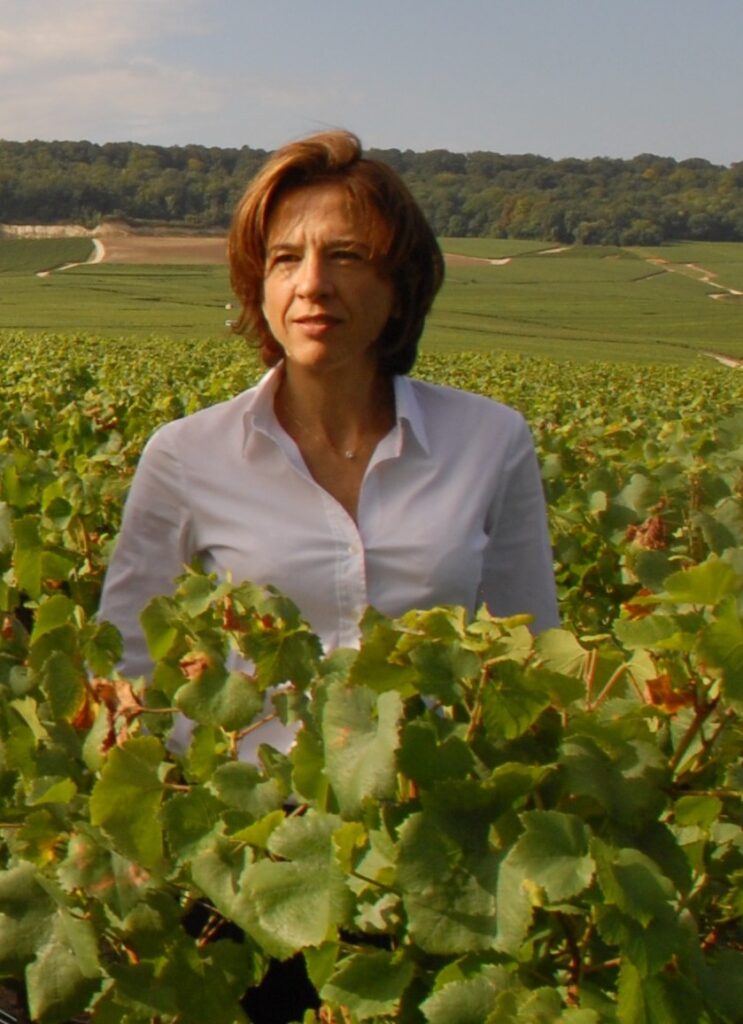
At l’Oréal, I learned work methods and acquired a lot of rigor. I developed a taste for excellence and a penchant for beautiful, luixury products. When I arrived at the estate, I felt the need to rely on that experience while adapting it to this new environment. My family and our land were going to be my compass on this new journey and would guide me in the implementation of my strategy. This élan also gave me the desire to put the spotlight on the craftsmanship that is the profession of grape growers – a savoir-faire that is transmitted from generation to generation.
Your first took the reins of AR Lenoble alone then a few years later your brother Antoine joined you. As a woman stepping into a male dominated world and as a novice entering the champagne business, how were you received?
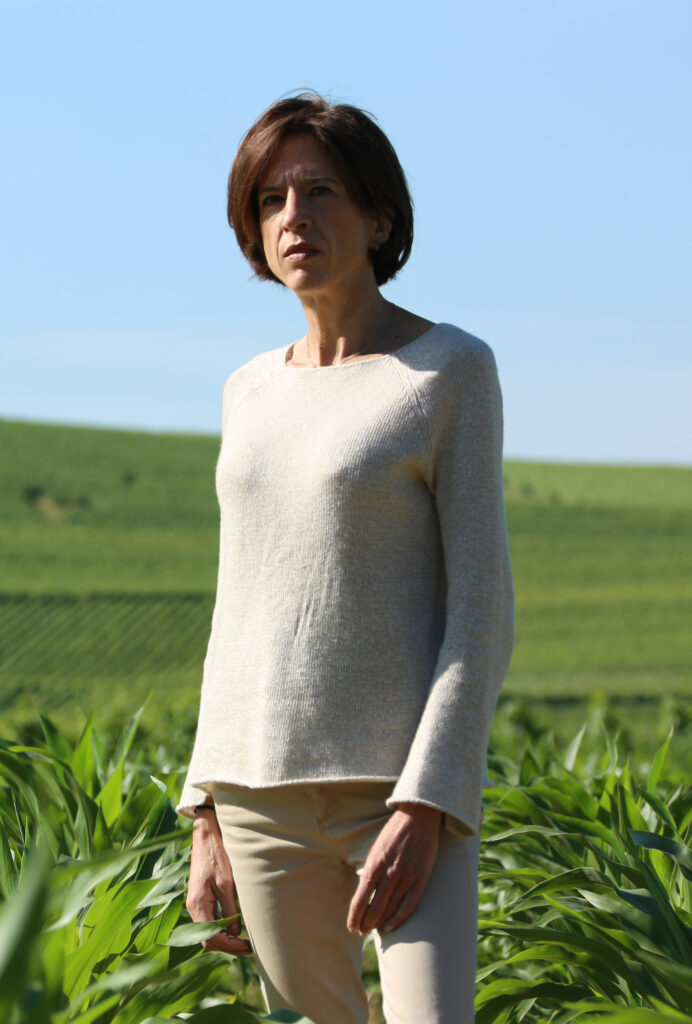
I must admit no one expected me. I was a woman, and I was 28 years old. I had been living in Paris for several years and I had zero knowledge and experience in the wine world.
Suffice it to say I had no credibility. I had to arduously work and fight for years to acquire hands on experience and earned legitimacy. I had to learn the skill of the trade on the job while simultaneously keeping a vision for the business and putting it in place.
This was an enormous challenge that required determination, courage, and a lot of work.
As a novice in this new industry, how did you set your first objectives? What guided your decisions?
I relied on my memories and the conversational exchanges I had with my dad. He, who had to mentor me, had to leave the business a year after I came onboard because he was suffering from a severe cancer. I then had to apply a lot of common sense and use empirical methods to understand, observe and make headway.
This is how I discover the power of “dosage”. If I was only able to commercialize my first harvest five years after my arrival, I discovered how and why the dosage process is of primordial importance to champagne bottles in the cellar. Ever since it became my quest to improve the dosage process by playing with the levels of the dosage as well as the timing.
By tasting and comparing, I was able to forge my own convictions regarding the elaboration of our champagnes, reducing to a strict minimum the dosage levels. I also introduced as early as 1999 a zero-dosage champagne.
It’s also conversations with my dad that inspired me to isolate grapes from a parcel “Les Aventures” located in Chouilly. My dad would always talk to me about these grapes which he considered to be exceptional because of the extremely particular quality of the soil.
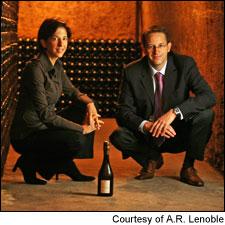
One of the first decisions I took when I first came onboard was to separately press these grapes and blend several years to craft a cuvée which bears the eponymous name of the lieux-dit “Les Aventures”. This cuvée has become the prestige cuvée of the house offering delicacy and aromatic magnitude. My father was right when he was praising the virtues of this parcel.
In several interviews you talk about the dynamics between you and your brother. He has more of a scientific & cartesian mind, and you on the other hand are more adventurous and a risk taker. Would you say the recipe for your success is the result of this alchemy?
The strength of a team relies on how talents and personalities complement each other whether it be among family members or among collaborators. I returned to the estate three years before my brother did. Upon his arrival, our strategy was laid out, but we had yet to put it into motion. It took us nearly 30 years to achieve that goal taking care of our vineyards and our wines. Each harvest we had to question ourselves in constant pursuit of excellence. The key to success is the complementarity of talents supported by a common vision and shared values.
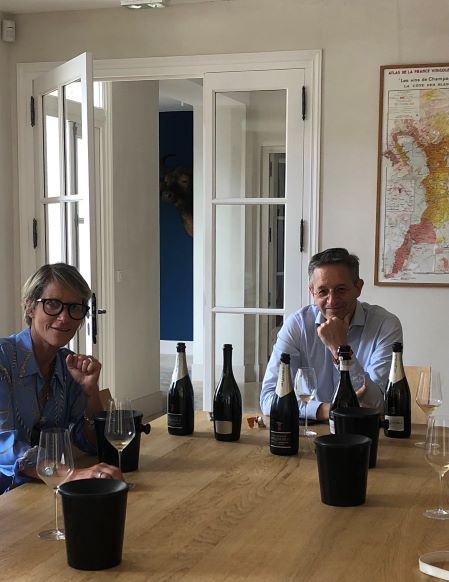
You are one of the co-founders of LA TRANSMISSION. What inspired you to create this organization?
Having to fight to impose myself in this very male dominated world, I always aspired to, one day, give women in Champagne a voice – without any feminist agenda but only to give them the place they duly deserve. In creating this group, I also wanted to avoid falling into the stereotypical trap of earning our legitimacy for the simple reason of being a “women’s group”.
I thus naturally talked to Maggie Henriquez who at the time was the CEO of Krug and shared my vision. Our group was not solely going to be a woman’s group, it was first and foremost going to be a group representative of the diversity of Champagne and of all champagnes. Today the group is composed of 8 women from different regions across Champagne, with different professional backgrounds and diverse experiences. Coming from different generations we can learn from each other and compliment each other. We also share strong values that unite us: strong focus & care of the vineyards, important family stories, strong convictions and commitments, the desire to give back and to transmit to other generations. All the above is what gives La Transmission its credibility and legitimacy. Today, we take great pleasure in sharing our experiences and allowing people to discover the diversity that exists among champagnes, and to show a more modern and more accessible image of the Champagne region.
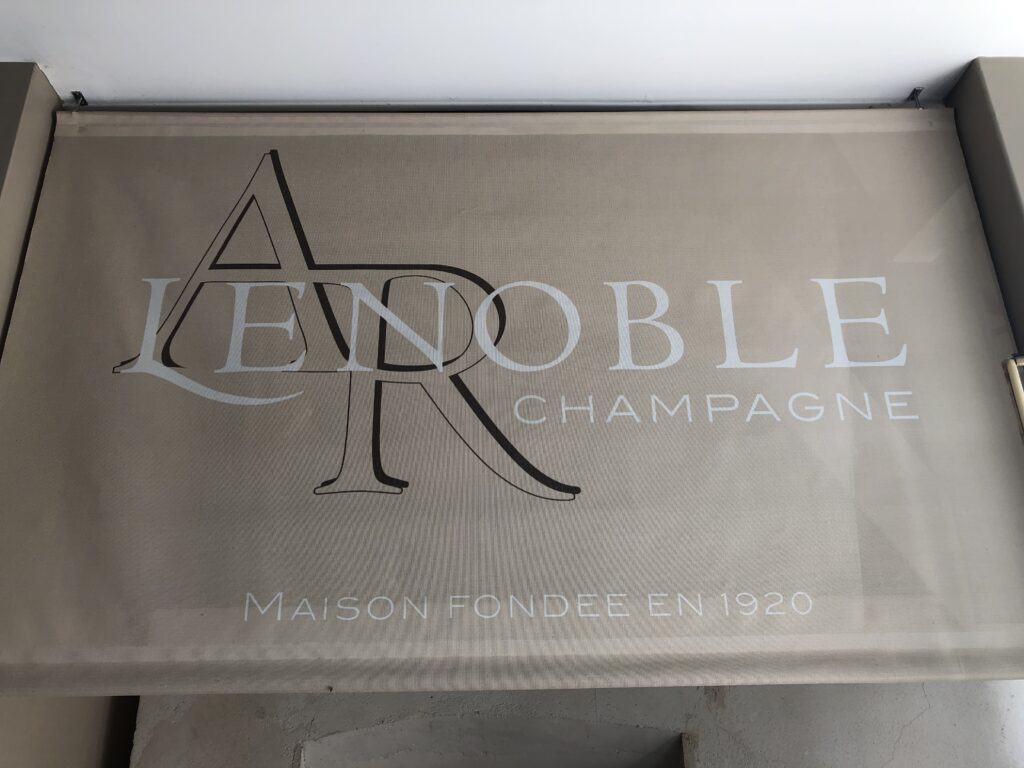
Many of your Cuvées use an important portion of Meunier in the blend. The least popular grape of the three principal grape varieties in Champagne, what role does Meunier play at AR Lenoble?
Meunier can be found in our champagne blend cuvées: Intense “mag” – Brut Nature Dosage Zéro “mag” and Cuvée Riche “mag”. Just like Pinot Noir and Chardonnay, Meunier has its own characteristics and assets. It is by combining different years, different grape varieties that we improve the quality of the blends. Meunier provides fruit, delicacy, crunchiness, a wide and spontaneous palette of aromas. Meunier is perhaps less popular than chardonnay and pinot noir because its aging potential is not as high as the other two. But like every human being, we’re all unique and special because of our individuality – of who we are and what we bring to the world. Meunier gained critical acclaim with the crafting of 100% Meunier champagnes that have reconciled the most exigent amateurs with this grape variety.
You are one of the pioneers of the Environmental movement in Champagne having earned the HVE Certification as early as 2012. What are some of the measures AR Lenoble has taken to face climate change?
We were the second Champagne house (after Bollinger) to receive the HVE certification We had sort of organically and spontaneously put in place all the necessary measures part of the HVE requirements. One could say that we anticipated this label without knowing it.
In 2010, without anticipating the deteriorating situation of the climate, we made the decision to store a large portion of our reserve wines in magnums under cork. The idea back then was to focus on our reserve wines, something no one was talking about in Champagne even though these wines represent 40% in most blends. When I told my brother that our reserve wines lacked precision and were a bit too heavy, I suggested the use of magnums as I was aware of its virtues. It’s a format that allows the wines to conserve their freshness, and courtesy of the phenomenon of autolysis to deliver a very rich aromatic palette.
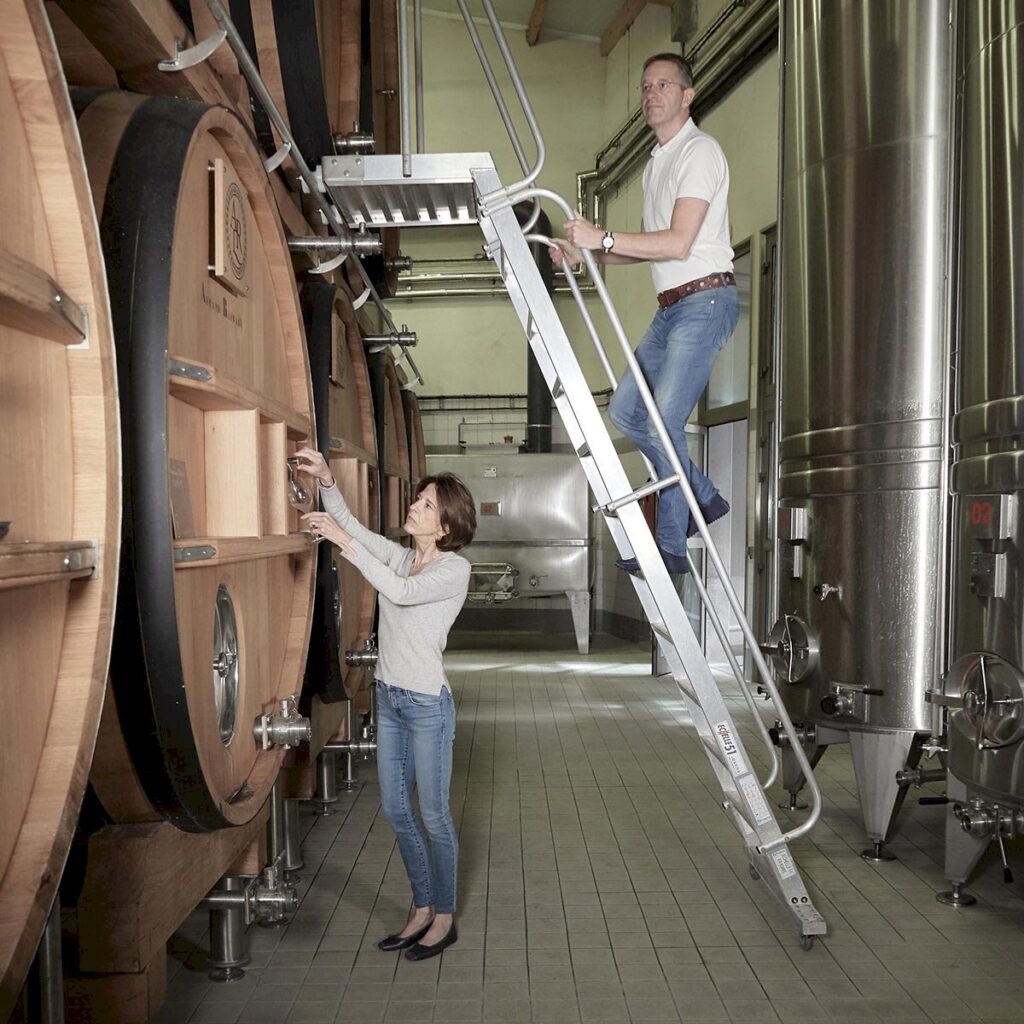
Reserve wines traditionally add aromatic complexity to the latest harvest which in turn is used to freshen up the reserve wines. With Global warming we will one day find ourselves in the unique and exceptional situation where our most recent harvest will be considerably less fresh than our reserve wines. Conserving freshness will become a major challenge. At AR Lenoble everything has been anticipated for the past 12 years, with every harvest bringing us rich and fresh reserve wines.
What are the advantages of the perpetual reserve and the maturation in magnums?
Our perpetual reserve is renewed every year with the addition of a portion of the most recent harvest which is stored in part in magnums since 2010. The remaining portion is stored in barrels (50 hl). These large wooden casks do not alter the wine but bring a slow oxidation and give density to aromas. Wood does not create aromas unlike autolysis in magnums, but it reinforces its power.
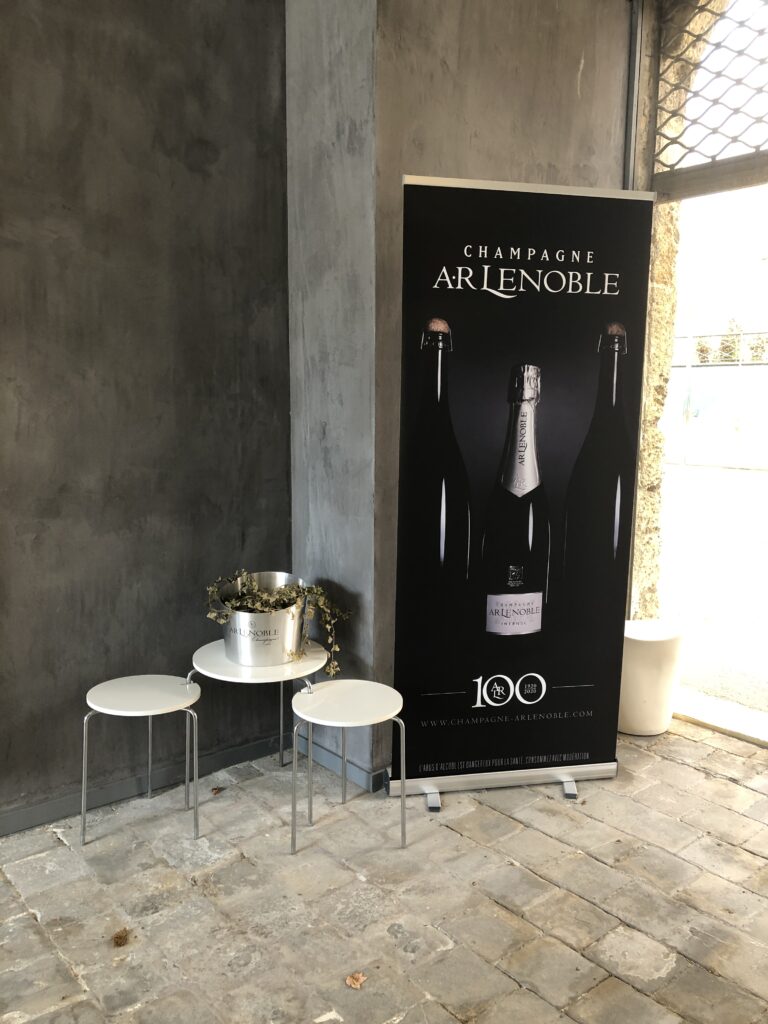
How would you define the AR Lenoble savoir-faire?
Big Champagne Houses remain the key motor of Champagne because of their visibility.
The volume produced by these Houses allow for a large distribution everywhere around the world and across all distribution channels. Their lucrative promotion and PR budget reinforces their notoriety among global consumers. Growers on the other hand produce much smaller volumes which limits their distribution and publicity. Their visibility and name recognition is much more weaker. But a limited production does not bind growers to deliver a product with the goal of pleasing the masses.
Growers can thus craft cuvées with more personality, character as opposed to the big houses who must satisfy millions of people and produce a consistent standard taste. The arrival of the internet and social media has also destabilized this equilibrium. Instagram, Facebook, Twitter, and LinkedIn are free communication means easily accessible to grower champagnes. In parallel, this new generation that get most of their information online is a generation that is thirsty for discoveries and authentic stories. Mass marketing is of no interest to them. They crave authenticity and meaningful experiences when it comes to their spending choices.
For the past thirty years I have been at the helm of AR Lenoble, I have always worked with pragmatism and have given sense to every decision I made. This is how we have continued the story of our Champagne House by giving it more power. I evolved with great humility, conscious of the fact that I had everything to learn and everything to prove, yet with great commitment and determination. From this emanates a champagne marked by this strong and personal signature style. I remained engaged in the business and focused without ever letting go of my convictions even if they sometimes went against the grain.
The AR Lenoble “savoir-faire” is about courage, precision, the pursuit of excellence and authenticity. All our champagnes carry the trace of the very personalities who shaped them.
What is your most memorable Champagne moment?
I have so many. So many personal happy and sad memories as champagne runs the gamut of births and funerals. So many shared moments with clients filled with sparkle in their eyes from the magic of champagne. I have several unforgettable moments but the ones I prefer are the simplest ones. Evenings spent sitting on the floor, two of us sharing a cheese board, a delicious loaf of bread and a bottle of champagne. Or those moments among friends, preparing dinner, all of us in the kitchen with a glass of champagne in hand celebrating life and friendship.
Champagne has the power to transform every simple instant in life into unforgettable, joyful, sincere, and powerful moments. Nothing compares to champagne.
Is there a question I have not asked you which you would have wanted me to?
Yes, perhaps this one: What fueled your energy throughout the years to allow you to continuously give more than 100% of yourself to the house?
The energy of life.
I am motivated by the desire to live – the desire to create, to enjoy the thrill, discover, and share.
I had my share of difficult moments and drama too but instead of letting these moments bring me down I found new energies in them. There is, deeply anchored in me, a life instinct that guides me and allows me to overcome obstacles to pursue my journey with enthusiasm and optimism.
For more information go to: https://champagne-arlenoble.com/en/

